All about humus

To obtain a generous harvest, every gardener must maintain soil fertility and increase this indicator. To improve the condition of the soil, it is required to constantly apply fertilizers with chemical and organic components to it. The safest and relatively inexpensive is humus, which can be made with your own hands at home.

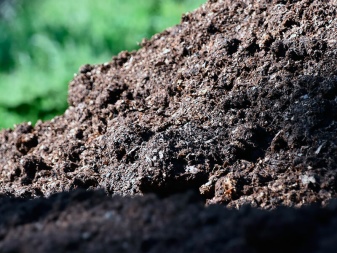
What it is?
Humus is a part of the soil, which is based on decayed plant and animal remains. The fertility indicator directly depends on the amount of this component in the soil. Humus looks like loose and soft, porous earth, sometimes small lumpy particles can be observed in the composition. This natural fertilizer does not have an unpleasant rotten smell. It has no drawbacks, since no negative impact occurs when applied to the soil.
In the country, in the garden and in the garden, humus is introduced into the outer soil layer. The use of this type of fertilizer has the following advantages:
- the soil becomes more structured, air exchange improves in it, and moisture is retained better;
- the percentage of humic and fulvic acids in the ground increases, which favorably affects the growth and development of plants
- there is a stimulation of the activity of soil microorganisms, as well as earthworms.
This type of fertile land contains a large amount of nutrients. The use of humus is aimed at improving the quality of growing seedlings, the rapid growth of shrubs and trees, as well as increasing the flowering period of indoor flora.
Experts advise to apply this type of fertilizer with some caution, since exceeding the dose can cause abundant foliage growth, and flowering will slow down.
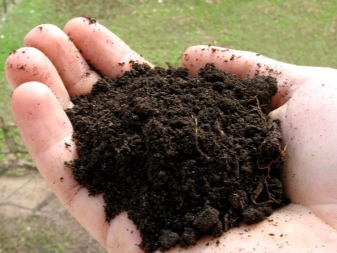

How is it different from manure?
Despite the fact that the principle of action of manure and humus is almost the same, there is still a difference in these fertilizers:
- humus is decomposed products, so it is able to gently and accurately increase the fertility of the soil, without showing an aggressive effect on vegetation;
- manure has a fresh, heterogeneous, concentrated structure, therefore it is usually used in areas with depleted soils for winter digging.
If the landowner has a choice of which fertilizer to use, he should know that the humus has already passed the fermentation procedure, decomposed, having lost some of the substances. After being applied to the soil, the fertilizer immediately begins its work, when the manure just enters the overheating phase. Manure as a nutritious fertilizer becomes readily available to vegetation after a while.

Comparison with peat
Peat and humus differ little in appearance, so gardeners often confuse them. Many landowners often ask questions: which fertilizer is better and what is the difference. The choice should be made based on the tasks that were assigned to the substance. Peat is a natural product that was formed under the influence of biochemical processes and without oxygen. Branches of trees, dead marsh vegetation, foliage and other natural components take part in its formation. When the decay process ends, coal is formed.This unique plant product can be used to create fertile soil and fertilize it, stimulate plant growth.
In addition, peat has found its use as a heater during the cultivation of vegetation, which does not show resistance to the frosty period. Peat has a high acidity, it is able to saturate the soil with oxygen. This is considered one of its main differences from humus. Peat is often used on poor clay, loamy, sandy and sandy loam soil. Unlike peat, humus is a universal type of fertilizer, but it is usually used in small quantities. According to experienced gardeners, humus is in many ways superior to peat, however, one should not forget about the second substance.
If you mix several natural fertilizers correctly, you can effectively saturate the soil with useful elements and get a rich harvest.
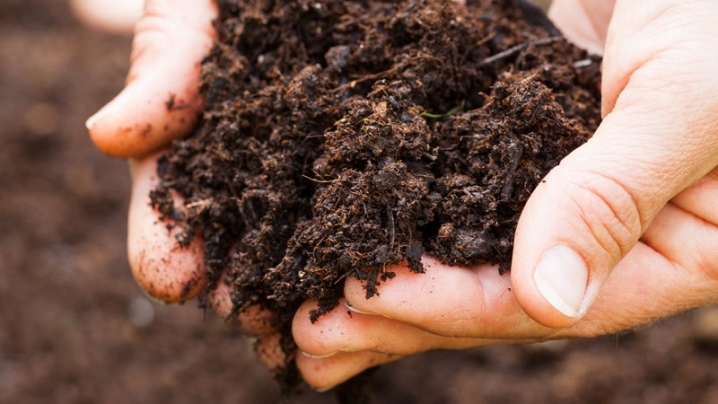
Types by composition
Often, humus consists of rotted grass, leaves, sawdust, apples. It is also prepared from cow, sheep, horse, rabbit manure. The feedstock directly affects the rate of decomposition and humification. After the decomposition processes are over, there is practically no significant difference between the types of humus.
The composition of humus contains the following types of acids:
- ulminovaya is formed by the decomposition of plant residues, grass, the presence of this substance gives humus a brown color;
- humic, in contrast to ulminic acid, is poorly soluble in liquid; with a large amount of humin, the soil has a rich dark color;
- heeling is formed during the decomposition of woody plants, a highly acidic substance can quickly dissolve in water.
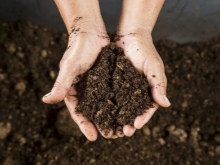

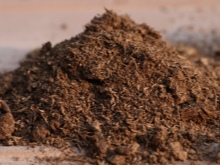
Dung
Dung humus is a type of natural fertilizer, it is also considered a source of useful elements: nitrogen, potassium, phosphorus, sulfur, chlorine, silicon. Thanks to this substance, plants can fully grow and develop. Cow dung is one of the most common fertilizers among other types of fertilizers. Its application should be careful, since an excess of manure can oversaturate the soil with nitrates. According to experts, cow humus is the least nutritious, since it contains a small percentage of the useful substance. However, this feature can be beneficial to plants, since their fruits will not be oversaturated with nitrates. Manure from an adult animal should be applied in the amount of 7000-10000 grams per 1m2.
Horse manure is considered the most effective natural fertilizer. It can be used both outdoors and indoors. Horse humus contains more useful components than cow humus. The introduction of this fertilizer has a beneficial effect on cabbage, potatoes, cucumbers, zucchini, squash and pumpkin. Fertilizing the soil with this substance, you need to observe the correct dosage: introduce 5000 grams of humus per 1 m2 of territory. When using a substance in a greenhouse as biofuel, it is poured into a 30-centimeter layer. After that, the substrate is poured with hot water with potassium permanganate dissolved in it. On top of the humus, it is necessary to pour a 20-centimeter fertile soil layer.
Pig manure contains both liquid and solid animal excrement, as well as residual feed and bedding. This type of humus is considered the most caustic due to the high concentration of ammonia. Rabbit humus has an original dry consistency and composition with a large percentage of seeds. Manure from rabbits must be brought into the soil for digging. To prepare this fertilizer at home, the excrement of rabbits should be dried, crushed in a mortar. Next, manure is mixed with earth, in a ratio of 1 to 3, and poured into pots for indoor crops. Chicken droppings have a semi-liquid structure and a high percentage of nitrogen, potassium, phosphorus, magnesium.
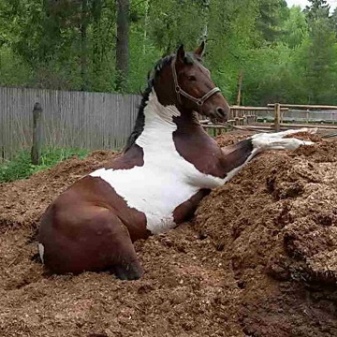
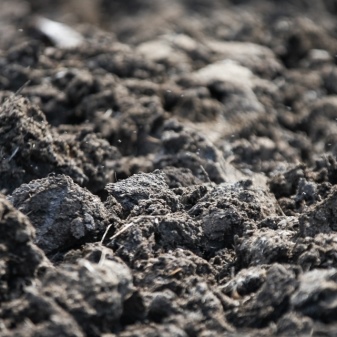
Sheet
Humus from fallen leaves of trees is considered an effective remedy, with its help you can improve the soil structure, make mulch and acidify plants - acidophiles. The foliar fertilizer is prepared in autumn; it is based on fallen leaves of garden and other types of trees. There are practically no nutrients in this substance, therefore it is not used as a fertilizer.
Soil, which has been enriched with foliage humus, can retain moisture for longer near the root system of plants. Thus, plants can more easily tolerate heat and drought. In addition, people do not need to collect foliage and burn it when cleaning the territory. To prepare humus, the foliage is moistened, tightly packed and tamped into special plastic bags or containers. Young humus can be considered ready 6-24 months after harvesting. It can be added to the ground on the site, dripped under the plants or spud them.
The matured fertilizer can be used as a substrate for indoor flora, seedlings or sowing seeds.
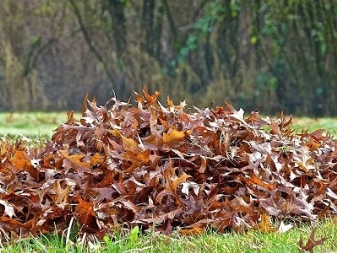
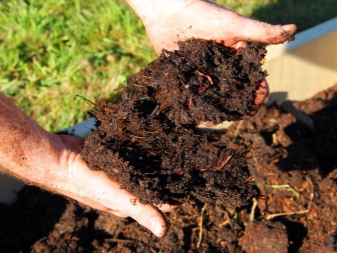
Herbal
Humus from grass, weed is an ideal type of fertilizer that you can make with your own hands, without spending a lot of effort and money. To achieve a positive effect from the use of fertilizer, you cannot take only green grass, it should be supplemented with straw, green branches, roots, fruits, sawdust, bark. The result should be clean humus without an unpleasant odor. For humus to be of high quality, it must be properly stored, for example, in a compost pit or bin.
To make humus at home, you can use one of the methods below.
- Take a box from a tree and put the manure that was collected for ripening into it. The top of the box should be covered with a dark film to protect it from the effects of precipitation. Humus can be considered ready if its initial volume has decreased by 60-75 percent, and the substrate is characterized by flowability and uniformity. This usually takes about 2 years.
- The accelerated method also requires the preparation of a wooden box with slots that will serve as ventilation. It is also worth taking straw, grass and leaves. It is better to grind the latter. After that, you need to put all the components in the box one by one. Layers should be watered with a liquid, which contains a diluted mullein or other type of manure. To decay faster, the contents of the box should be stirred from time to time. In case of too hot weather, future humus must be watered. Acceleration of the decay process is possible with the use of bacterial preparations, for example, "Baikal".
- Sometimes humus is prepared from sawdust, but in practice it is rarely used. Woody material decomposes for a very long time, over 5-10 years. Therefore, sawdust often plays the role of compost for organic matter and mineral fertilizers.
Some gardeners make a significant mistake during the preparation of humus: they lay the mass dry. But it must be borne in mind that with a lack of moisture, decomposition will be slow.
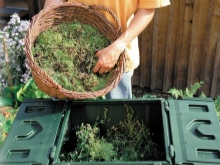
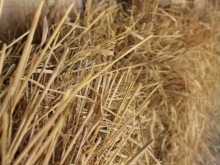
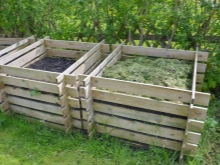
How and when to apply to the soil?
Growing a generous harvest is almost impossible without top dressing. As practice has shown, humus must be used for this purpose. To fill up the fertilizer, cover the plants for the winter or feed the trees in the spring, you only need a shovel and humus. The amount of the latter depends on the type of vegetation, the size of the territory and the composition of humus. In the spring season, humus must be applied, taking into account the needs of the plants on the site. Usually, vegetables and other crops are sufficient per square meter from 2 to 4 buckets. In autumn, a bucket of humus can be added to the same territory, which is mixed with two tablespoons of superphosphate and the same amount of phosphorus-potassium fertilizer, two glasses of ash.
The effectiveness of the result of its application depends on the correct introduction of humus. For example, cow humus can be used on any type of soil, and horse humus is considered ideal for clay soil. Pig manure is characterized by long-term decomposition, therefore, to accelerate decay, it is advisable to mix it with horse manure. If you want to add humus in the fall, the gardener should not drop it into the soil, as this can lead to the death of active microorganisms, as a result, all useful macronutrients will lie in the ground until warm, without decomposing. The introduction of manure directly into the land is considered impractical and economically unprofitable.
In autumn, humus should be poured onto the site where potatoes, cucumbers, and tomatoes grew before. These crops require a large amount of nitrogen, which can burn the seedlings in the spring. In the autumn period of the year, manure can be added to the soil, which has been diluted with water in advance. It is advisable to pour humus into trenches or sprinkle them with mineral fertilizers on top. In the spring, it is recommended to introduce manure into the garden or under the trees, which is well peeled or humus in the form of compost. The best option in this case is fertilization, which has ripened from 12 to 24 months. This substance can be applied directly to the wells without fear of burning the plants. During the summer period, many gardeners mulch the soil with humus. This procedure entails the activation of beneficial bacteria. The humus layer protects vegetation from frost and excessive heating.
Most often, people put humus under a shovel and close it up deep enough. However, it is considered more effective to incorporate fertilizer into the upper soil layer. On the surface, the presence of the most active flora, earthworms, is observed.
It is considered advisable to spread humus and mix it with the soil, while it is worth adding from 5 to 8 kilograms of fertilizer per 1 m2.
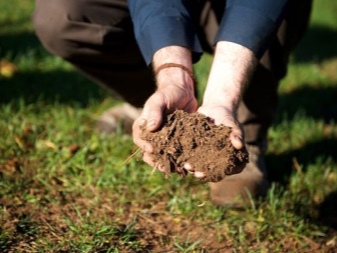
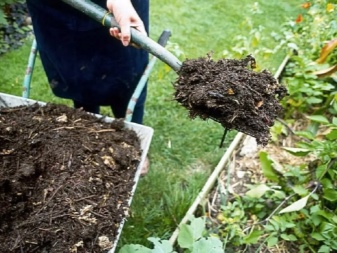
Application tips for different plants
Microparticles of humus are quite elastic, so there is always an air space between them. This feature contributes to the fact that a large amount of oxygen and moisture is supplied to the plant roots. Such conditions are considered the best for the growth and development of various representatives of the flora. Fulvic acids stimulate the production of minerals that the vegetation assimilates.
One of the options for using humus is to add it to the seedling substrate. You can also cover roses for the winter and other garden flowers with fertilizer. Depending on the type of crops grown, there is a difference in the ratio of soil, humus and other components in parts.
|
Culture name |
Humus volume |
Sod land volume |
Amount of sand |
Peat quantity |
|
Tomato |
2 |
2 |
1 |
- |
|
Pepper |
5 |
3 |
- |
1 |
|
Eggplant |
2 |
1 |
1 |
- |
|
Zucchini, cucumber |
1 |
1 |
- |
- |
|
Pumpkin |
2 |
1 |
- |
- |
|
Melon watermelon |
3 |
1 |
- |
- |
|
Cabbage |
2 |
1 |
- |
1 |
It is considered useful to add humus to the holes during planting of fruit and ornamental crops. From the third year of life, trees are fertilized once every 24 months. To do this, about 20 kilograms of humus are introduced into the trunk circle.
Fruit and ornamental shrubs require an annual sprinkling of humus in the form of mulch, while the layer should be at least 5 cm. Mulching with humus is considered useful for cucumbers, zucchini, cabbage and garden strawberries. Humus is considered a useful fertilizer for trees and indoor flowers.
Its use not only stimulates the growth and fruiting of crops, but also improves the structure of the soil, its biological content. However, every gardener should remember that the application of humus must be accurate and correct.
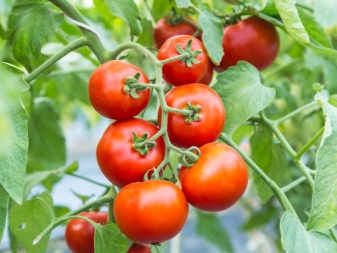
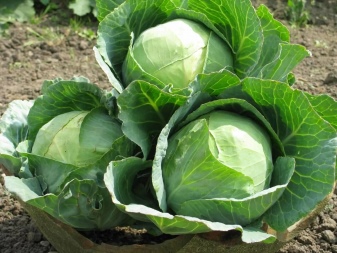
For what humus is and how to make it, see the next video.













The comment was sent successfully.